News
Analysis and documentation of textiles found in Tomb II
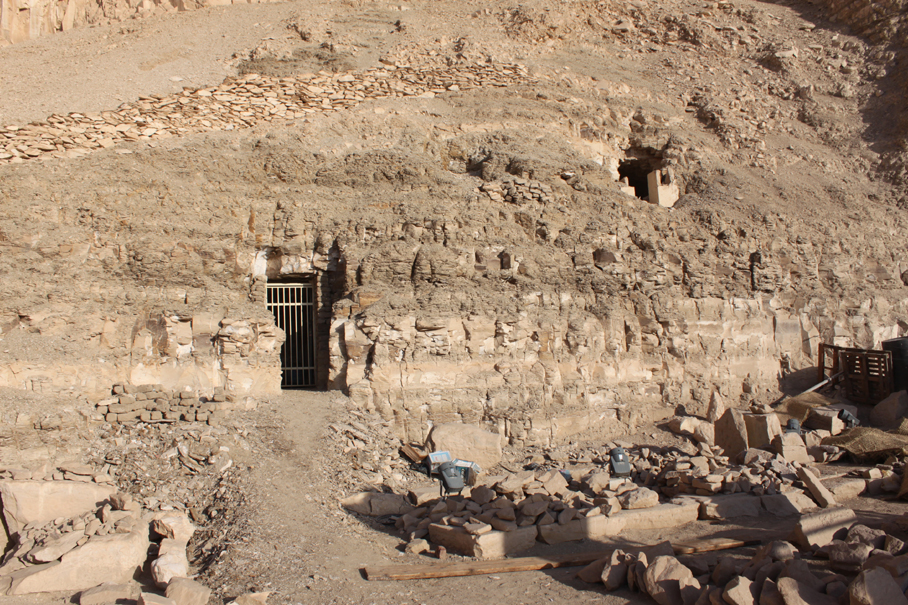
Background
The Polish-Egyptian Archaeological and Conservation Mission of the Temple of Hatshepsut at Deir el-Bahari conducted work in a rock-cut tomb (Tomb II) situated in the cliffs to the west of the Djeser-akhet temple of Tuthmosis III during the 2011/2012 and 2012/2013 seasons. 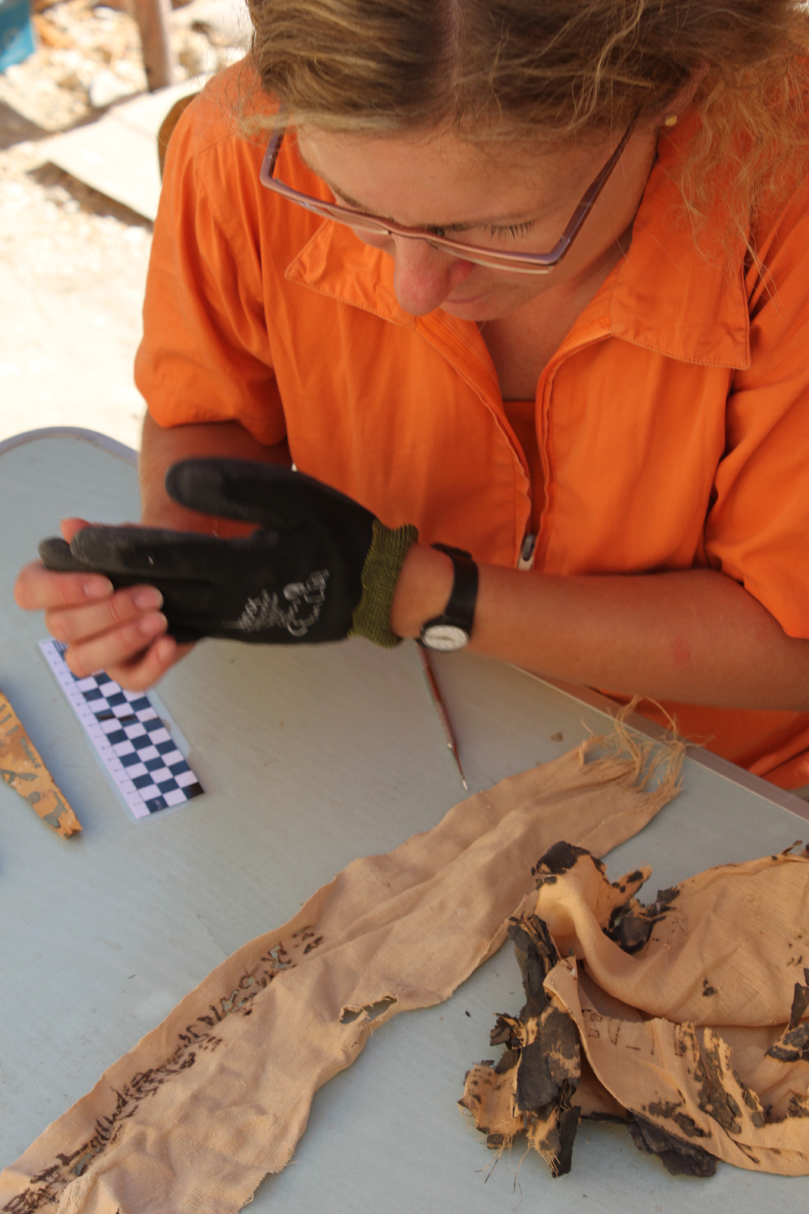 The remains of disturbed burials dated to the Third Intermediate Period/ beginning of the Late Period were found inside the tomb. Various elements of funerary equipment, along with an immense amount of funerary linen, were scattered throughout the tomb that has two irregular rooms (A and B) above the ground, with a shaft leading to two subterranean rooms (C and D). The archaeological material was entirely mixed including modern intrusions. The abundance of textiles in comparison to other finds may point to the conclusion that Tomb II was used by early excavators to rebury textiles.
The remains of disturbed burials dated to the Third Intermediate Period/ beginning of the Late Period were found inside the tomb. Various elements of funerary equipment, along with an immense amount of funerary linen, were scattered throughout the tomb that has two irregular rooms (A and B) above the ground, with a shaft leading to two subterranean rooms (C and D). The archaeological material was entirely mixed including modern intrusions. The abundance of textiles in comparison to other finds may point to the conclusion that Tomb II was used by early excavators to rebury textiles.
Documentation
All of the excavated textiles were cleaned, examined, recorded, and stored in cartons. The pieces that were attached to bones or solidified into hard masses were left as they were and stored separately. The same was done with the linen bags, which were collected into five separate cartons.
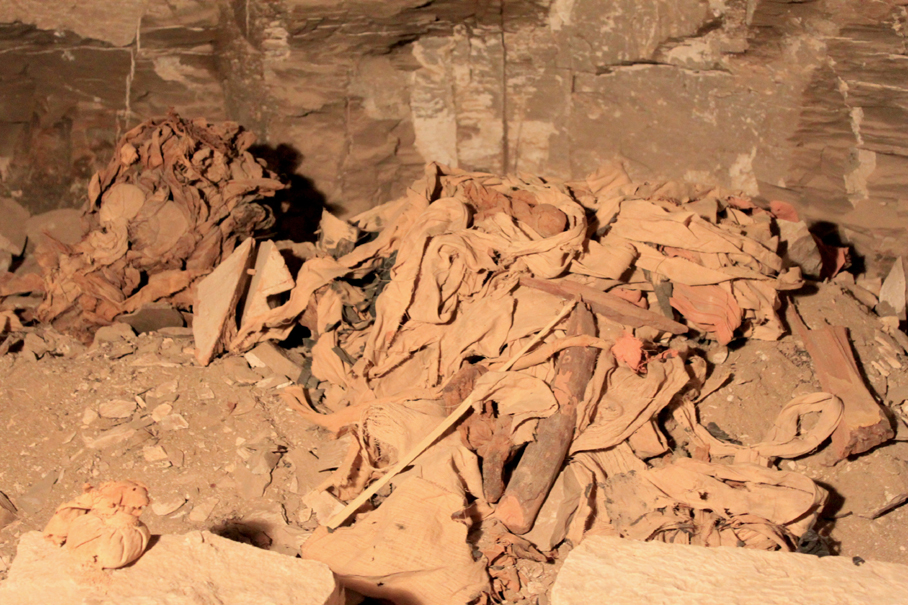
The disturbed archaeological context, as well as the massive amount of excavated textiles, forced a decision about what textiles would be selected for further study. First, inscribed linens (Inv. 2021, 2022, 2023, 2024, 2025, 2026, 2027) were separated. Additionally, the diagnostic pieces regarding the purpose of the textiles as well as the weaving techniques were chosen for further investigation (Inv. 1982/1-3, 2028/1-9, 2029, 2030/1-3, 2031/1-15, 2032/1-6, 2033/1-5, 2034/1-2, 2035, 2036/1-4, 2037, 2038/1-2, 2039/1-4, 2040/1-15, 2041/1-3, Inv. 2375/ 1-4, Inv. 2400/1-5).
Preliminary results
The preliminary examination of the textiles reveals that some are of very high quality, many of which are preserved with their original colors. Among the examined textiles were pieces completely dyed in pinkish or brown-reddish color [Inv. 2021, Inv. 2028/1] as well as items that were colored only partially [Inv. 2375, Inv. 2400].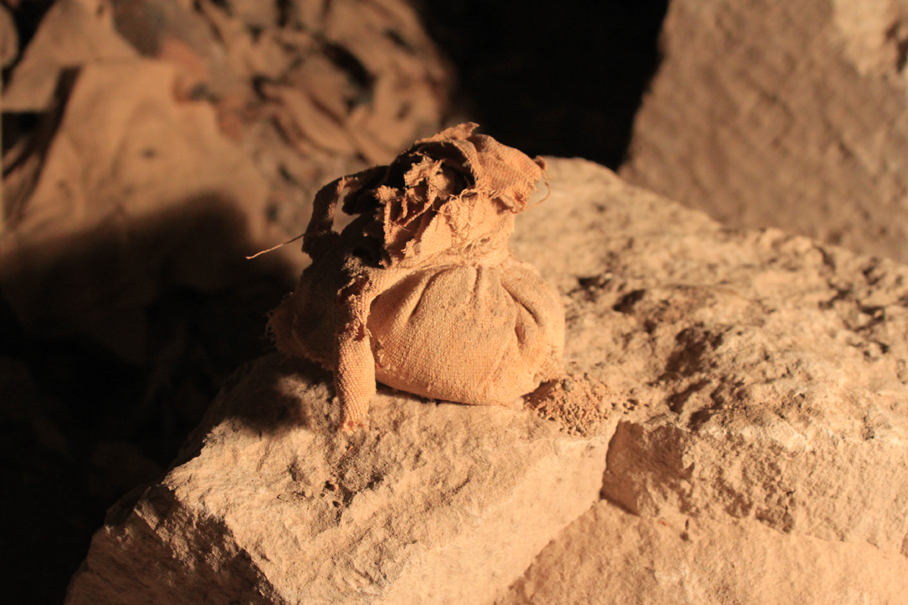
None of the textiles were preserved in their full length. They vary in size, from the smallest piece ca. 0.5 cm to the largest ca. 200 cm in length [Inv. 2021]. The widest piece is 70 cm in width. All of the examined textiles are of the tabby weave. The exception is found on a few pieces that have a section of blue strip weave in half-basket with the rest of the fabric is still in tabby weave (Inv. 2375). Many textiles survived with at least one diagnostic feature (e.g. a starting-border, selvedges, self-bands, fringes) and thus constitute an important corpus for further studies.
Importantly, several pieces have inscriptions written in hieroglyphics and hieratic. These texts contain fragmentary portions of names and titles. One of the found textiles (Inv. 2026) has a fragmentary cartouche of Taharqo.
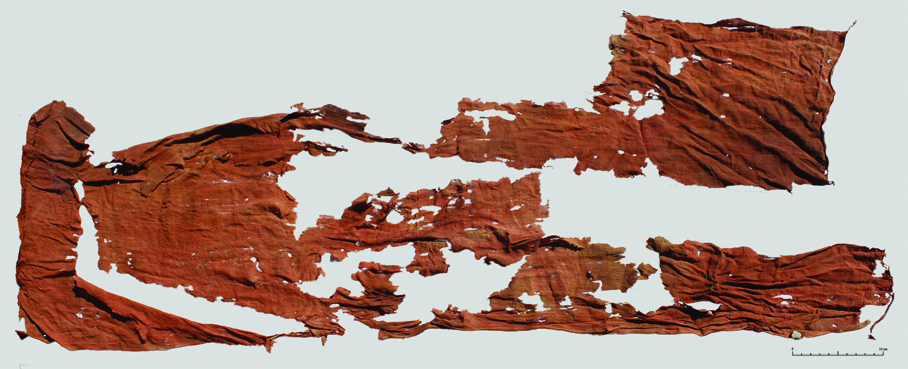 It was possible to identify textiles that were frequently reused. These textiles were used for funerary linen, including bandages, holding strips, and fragments of shrouds [Inv. 2021]. Those textiles, as well as other burial remains, leave no doubt that they come from a burial context. In addition to textiles, a considerable amount of small linen bags were discovered. The bags were most likely filled with natron, probably mixed with other components, and used during the mummification process. Thus, it is possible that the remains of an “embalmer cachette” were found in Tomb II.
It was possible to identify textiles that were frequently reused. These textiles were used for funerary linen, including bandages, holding strips, and fragments of shrouds [Inv. 2021]. Those textiles, as well as other burial remains, leave no doubt that they come from a burial context. In addition to textiles, a considerable amount of small linen bags were discovered. The bags were most likely filled with natron, probably mixed with other components, and used during the mummification process. Thus, it is possible that the remains of an “embalmer cachette” were found in Tomb II.
Importance of further work
Over the centuries, numerous burials from the Third Intermediate and Late Period have been discovered in western Thebes; however, the textiles that constituted a significant part of the burial equipment are barely known. As a result, they are very rarely studied and published. Moreover, it is frequently impossible to trace where they are stored nowadays and thus, they seem to be lost forever. This unfortunate fate of funerary cloths is a great loss for textiles and mummification studies. Thus, 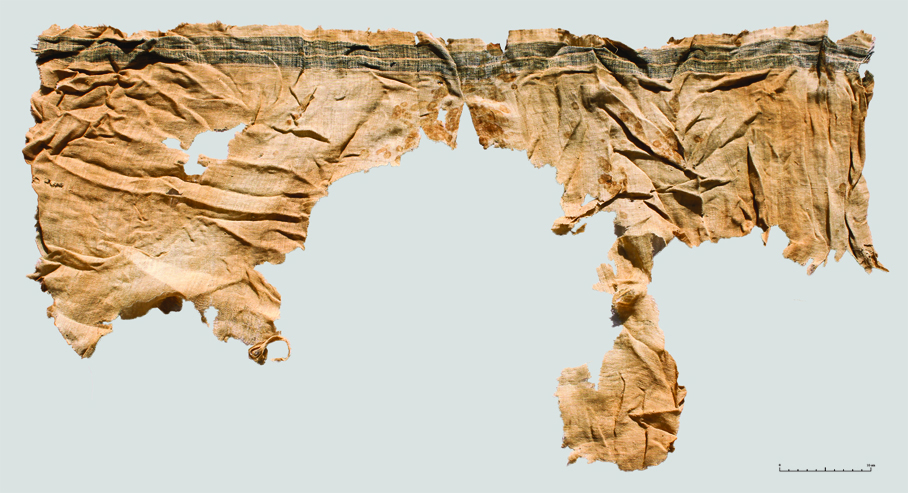 despite the fact that textiles from Tomb II come from disturbed archaeological contexts, they are an important addition to the corpus of Pharaonic textiles.
despite the fact that textiles from Tomb II come from disturbed archaeological contexts, they are an important addition to the corpus of Pharaonic textiles.
Bibliography:
Hallmann A., Textiles from Tomb II in Deir el-Bahari: the preliminary report from the season 2012/2013, Polish Archaeology in the Mediterranean 24 [forthcoming].
Hallmann A., More items of funerary linen from Deir el-Bahari burial assemblages, (in:) Deir el Bahari Studies, ed. Z. Szafrański, Special Studies PAM 24 [forthcoming].
Project supervisior: Aleksandra Hallmann
Contact: aleksandra.hallmann@gmail.com
Research was conducted also in the context of a dissertation project on "The Representation of Private Costume in Egyptian Art from the 25th to the 31st Dynasty" for the University of Warsaw, funded by the National Science Centre, Poland, doctoral scholarship Etiuda 1 (UMO-2013/08/T/HS3/00116).
Egyptological projects I Archaeological projects I Conservation and architectural projects I Field reports I History of research



